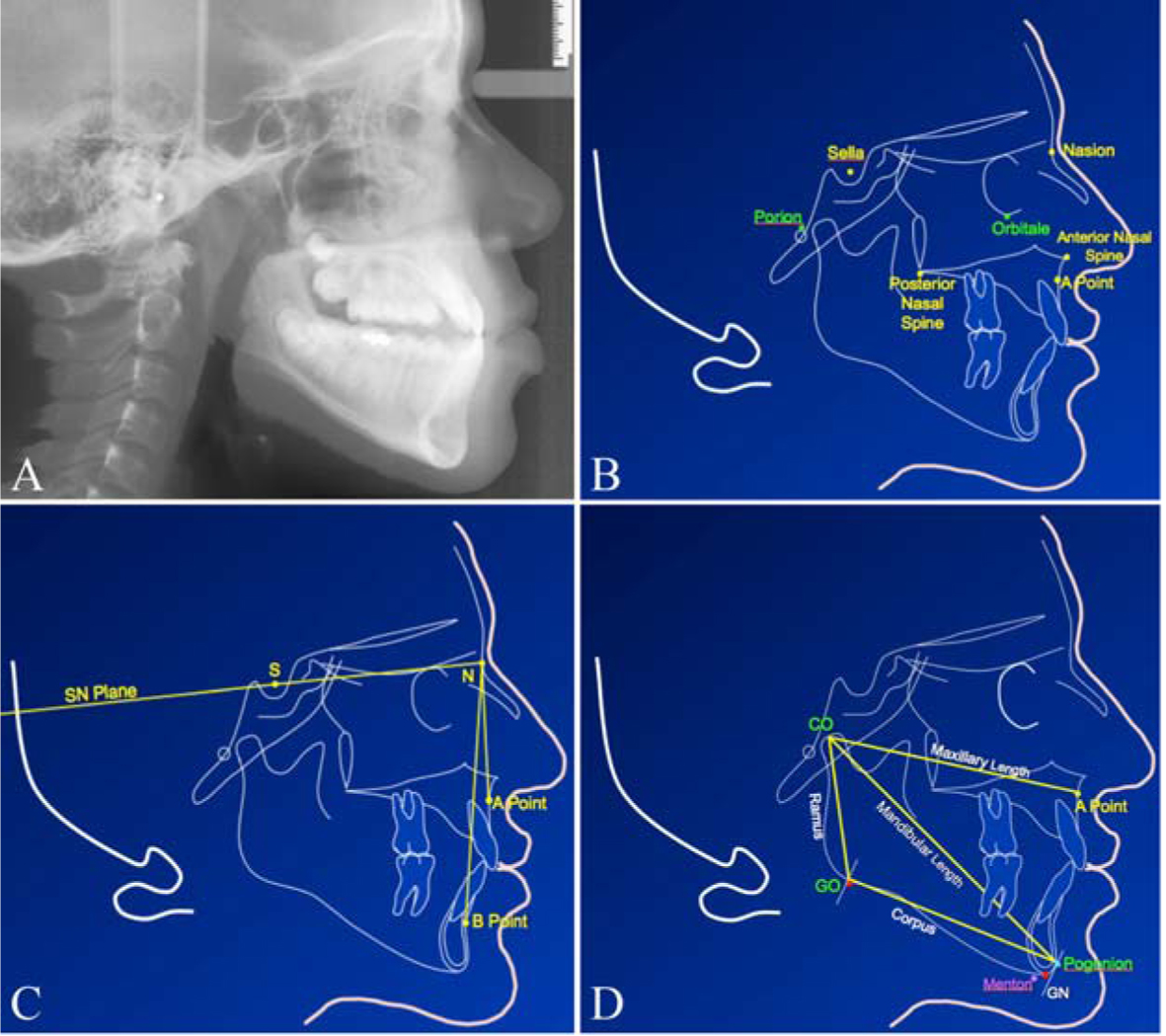
Figure 1. (A) Cephalometric radiograph of a 13-year-old male. (B) Cephalometric tracing of skeletal landmarks used for geometric constructions. (C) The anterior cranial base (S-N plane) and the angle between SNA and SNB planes that indicate the maxillary and mandibular positions, respectively. (D) The mandibular and maxillary landmarks and planes used to measure the length. Co-Pg is the linear mandibular length from condylion to pogonion. Co-Go is the ramus length from the condylion to the gonion. Go-Pg is the mandibular corpus length from the gonion to the pogonion.